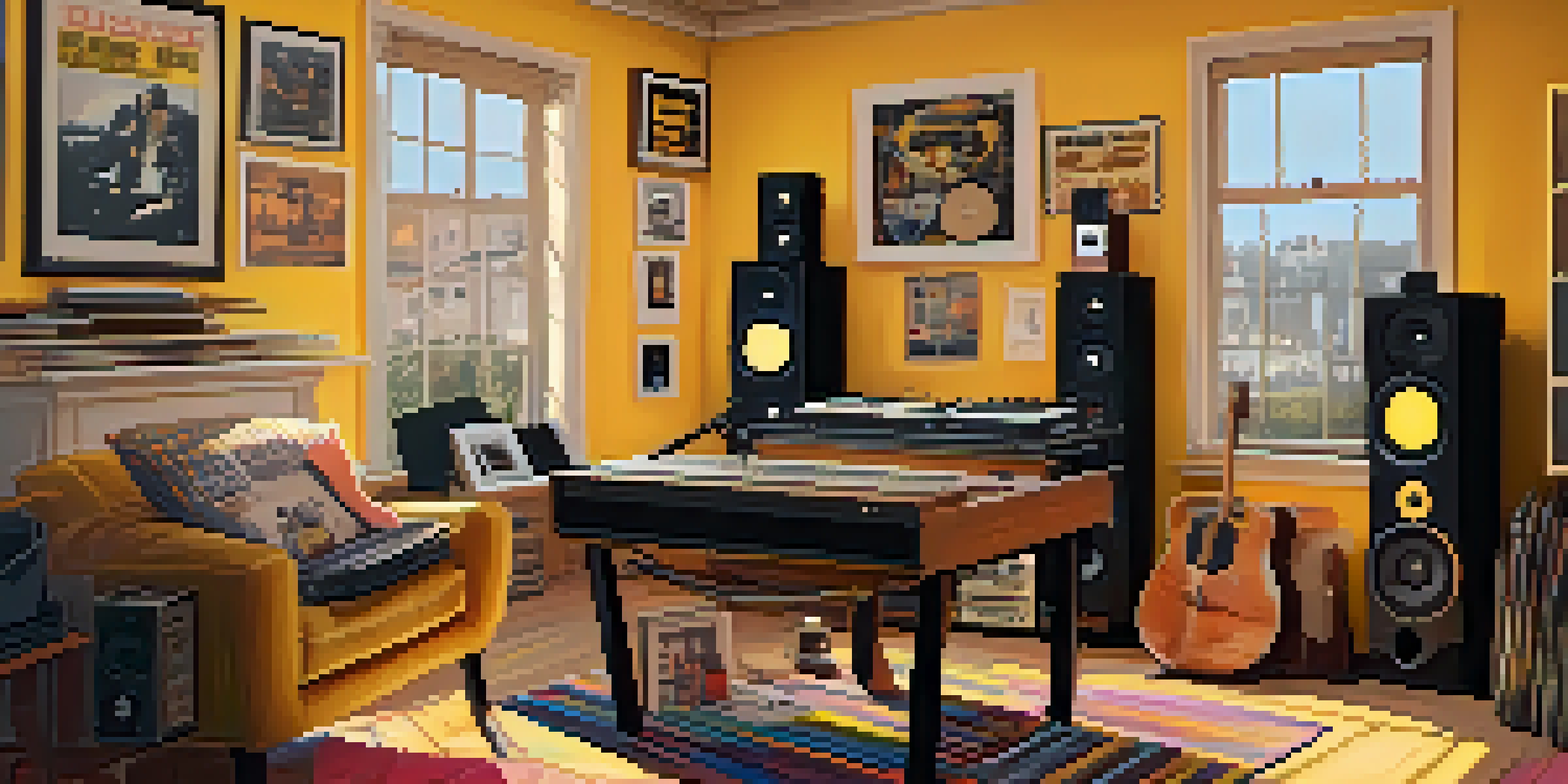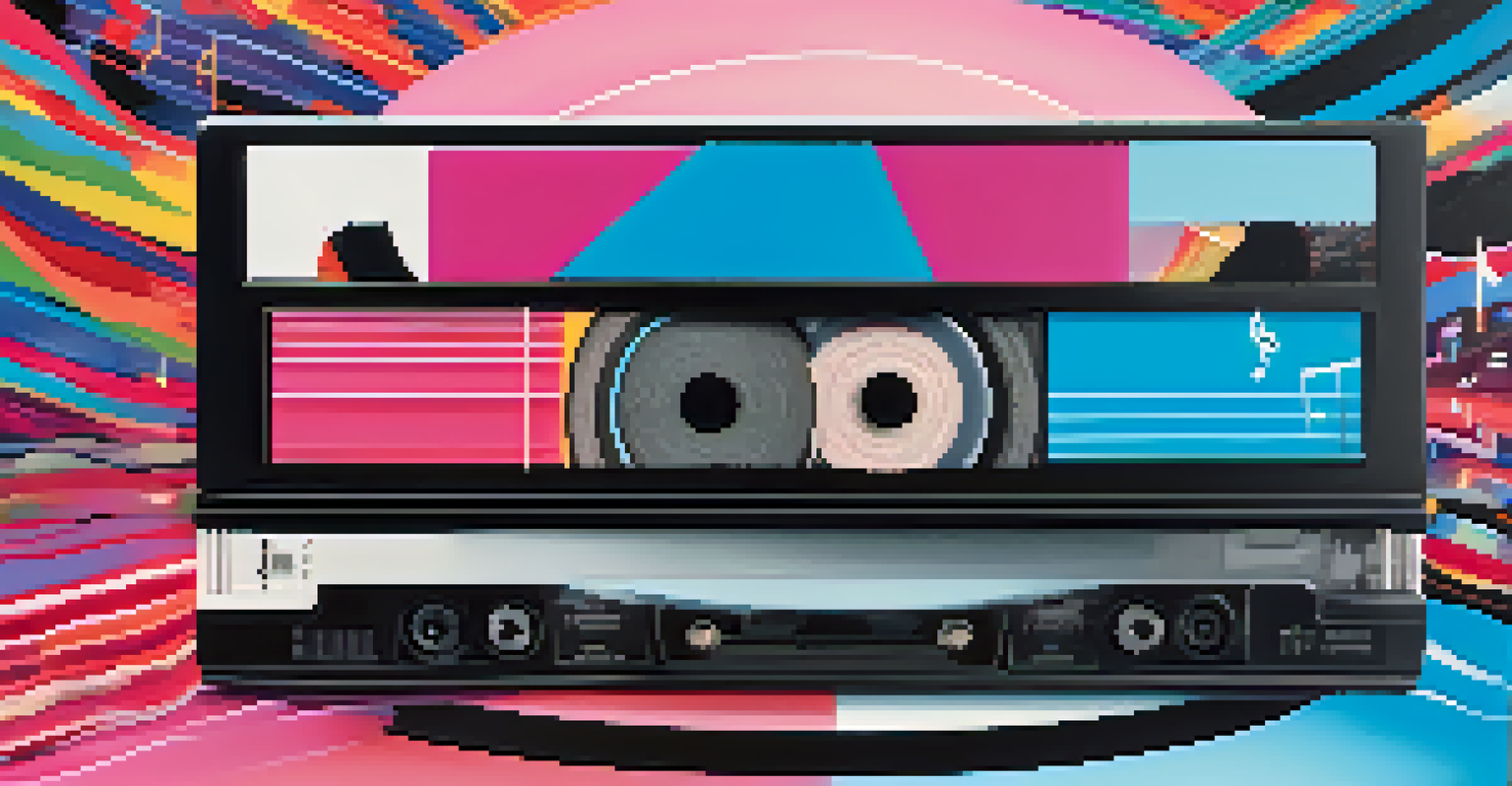How the Internet Changed Music Consumption Habits

The Shift from Physical to Digital Music Formats
In the past, music lovers relied heavily on physical formats like vinyl records, cassettes, and CDs. These formats required consumers to purchase entire albums, often resulting in them owning songs they didn't particularly enjoy. With the advent of the internet, digital formats like MP3s emerged, allowing listeners to buy and own individual tracks. This shift not only made music more accessible but also tailored the listening experience to individual tastes.
Music brings people together, and it’s more accessible than ever thanks to digital platforms.
The rise of digital music changed the landscape of music consumption, enabling users to create personalized playlists rather than being confined to an album's tracklist. This newfound freedom fostered a more intimate relationship between the listener and their music. No longer did you have to fast-forward through songs you didn't like; your playlist could be a reflection of your unique musical journey.
As digital music became mainstream, platforms like iTunes and later, streaming services, made purchasing and accessing music easier than ever. The convenience of having entire libraries at your fingertips transformed how consumers interacted with music, leading to a more on-demand culture.
The Emergence of Streaming Services
Streaming services like Spotify, Apple Music, and YouTube have completely reshaped music consumption habits. Instead of purchasing individual songs or albums, users can now access vast libraries for a monthly fee or even for free, supported by ads. This shift has led to an explosion in music availability, allowing listeners to discover new artists and genres with just a click.

The convenience of streaming has also changed how we think about music ownership. Many users now prefer to stream music rather than own it, leading to a decline in physical sales and digital downloads. This paradigm shift reflects a broader trend of valuing access over ownership, mirroring how we consume other media like movies and television.
Music Consumption Has Shifted Online
The transition from physical formats to digital music has made music more accessible and personalized for listeners.
Moreover, streaming platforms leverage algorithms to suggest music tailored to users' preferences, fostering a sense of discovery that traditional formats couldn't offer. This personalization keeps listeners engaged and encourages them to explore genres they may have never considered before.
Access to a Global Music Library
The internet has effectively broken down geographical barriers in music consumption. What once was limited to local record stores or radio stations is now a global marketplace. Listeners can explore music from different cultures and countries, broadening their musical horizons like never before.
Streaming is the new radio. It’s how we discover music today.
For example, a listener in the U.S. can easily stumble upon K-pop hits from South Korea or Afrobeat tracks from Nigeria, thanks to the vast array of options available on streaming platforms. This global access not only enriches the listener's experience but also helps promote diverse artists who may not have had the chance to reach a wider audience otherwise.
This democratization of music consumption also allows independent artists to share their work without the backing of major labels. Platforms like Bandcamp and SoundCloud have empowered musicians to reach fans directly, creating a more vibrant and varied music scene.
The Role of Social Media in Music Discovery
Social media has become a powerful tool for music discovery, allowing fans to engage with artists directly. Platforms like Instagram, TikTok, and Twitter create spaces where fans can share their favorite tracks and discover new ones. This has led to viral trends where songs gain popularity almost overnight, thanks to the power of social sharing.
One prominent example is TikTok, where short clips of songs can go viral, propelling unknown artists into the spotlight. This phenomenon has changed how music is marketed, shifting the focus from traditional advertising to organic, user-generated content that resonates with younger audiences. The immediacy and accessibility of social media have allowed for a more dynamic relationship between artists and fans.
Streaming Services Dominate Industry
Platforms like Spotify and Apple Music have transformed how we access music, prioritizing convenience and discovery over ownership.
Moreover, the interactive nature of social media encourages artists to engage with their listeners, fostering a sense of community. Fans feel more connected to their favorite musicians, which can translate into increased loyalty and support for their work.
The Decline of Album Sales and Rise of Singles
The traditional album format has seen a decline in popularity as listeners increasingly gravitate towards singles. With streaming services making it easier to access individual tracks, artists are now focusing on releasing catchy singles rather than full albums. This shift reflects changing consumer habits, as people often prefer to listen to a few standout songs rather than invest time in a whole album.
This trend has significant implications for artists and the music industry at large. While it allows artists to release music more frequently, it can also lead to a reduced emphasis on cohesive albums that tell a story. Instead, musicians may prioritize creating hits that will perform well on streaming charts and playlists.
Despite this shift, some artists still find ways to innovate within the album format, crafting unique experiences that entice listeners. For example, surprise album drops and concept albums that blend storytelling with music can still capture audience attention in a landscape dominated by singles.
The Impact of User-Generated Content on Music Trends
User-generated content (UGC) has become a significant driver of music trends in the digital age. From covers and remixes to fan-made dance challenges, UGC allows fans to engage creatively with their favorite songs. This interactive approach has the potential to take a song from obscurity to viral sensation, showcasing the power of community in shaping music consumption habits.
For instance, when a user posts a unique dance challenge to a particular song, it can prompt thousands of others to join in, leading to a surge in streams and downloads. This not only benefits the original artist but also creates a sense of shared experience among fans, transcending geographical boundaries.
Social Media Boosts Music Discovery
Social media has become a key player in music discovery, enabling fans to engage directly with artists and amplify songs through viral trends.
As a result, artists have begun to embrace UGC as a valuable marketing tool, often encouraging fans to participate in challenges or share their interpretations. This engagement fosters a collaborative atmosphere where fans feel invested in an artist's success, creating a mutually beneficial relationship.
The Future of Music Consumption in a Digital World
As technology continues to evolve, so too will music consumption habits. Emerging technologies like virtual reality (VR) and augmented reality (AR) are poised to redefine how we experience music, potentially offering immersive concerts and interactive music videos. These innovations could create new ways for fans to connect with artists and their music.
Additionally, advancements in artificial intelligence (AI) are set to further personalize the listening experience. AI could recommend music not just based on past behavior but also on emotional responses, creating a more tailored experience that resonates deeply with listeners.

While we can only speculate about the future, one thing is clear: the internet has already transformed music consumption in profound ways. As we embrace new technologies, the relationship between artists and fans will continue to evolve, ensuring that music remains an integral part of our lives for generations to come.